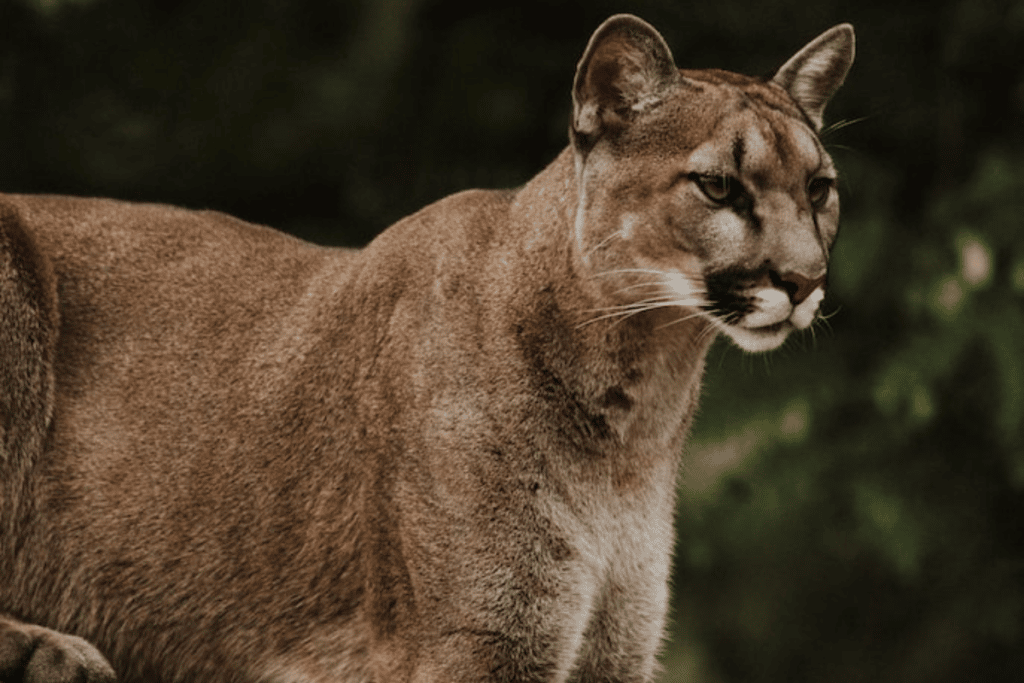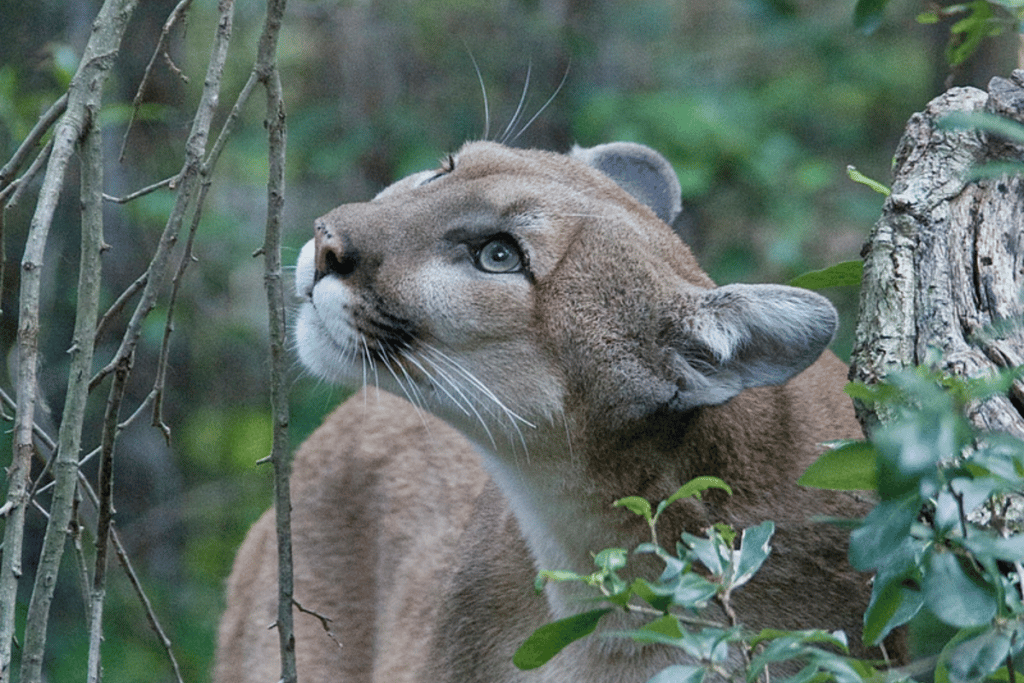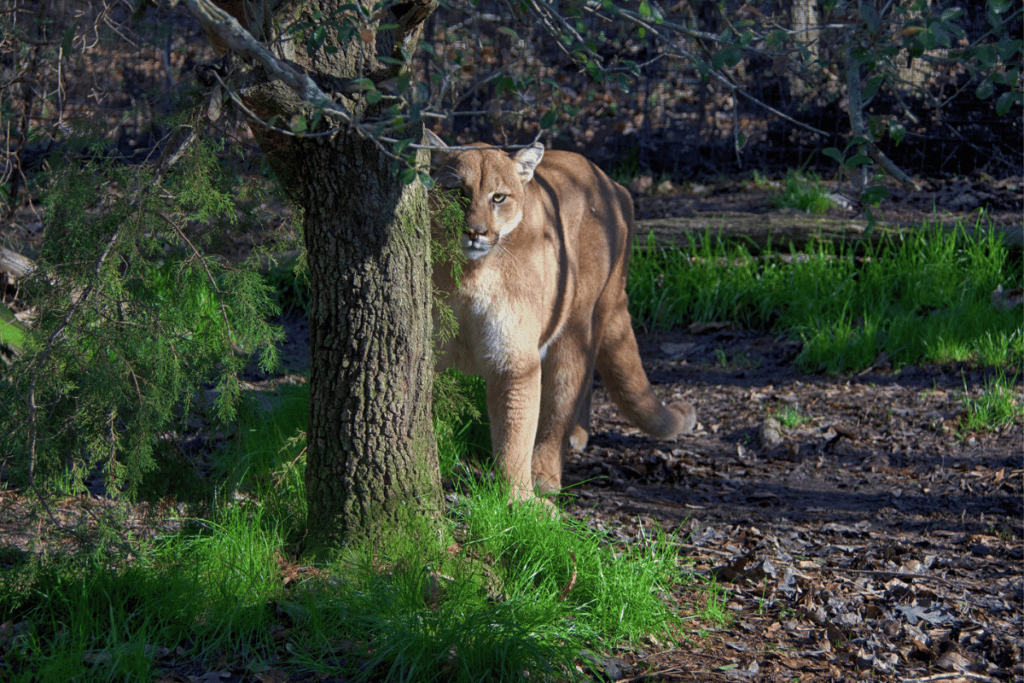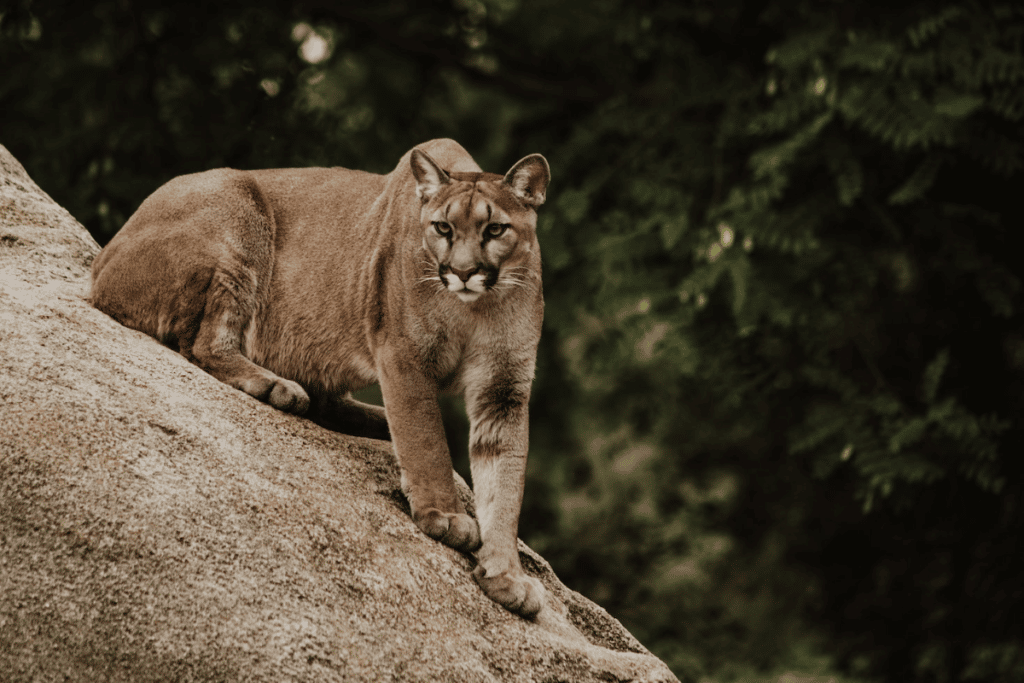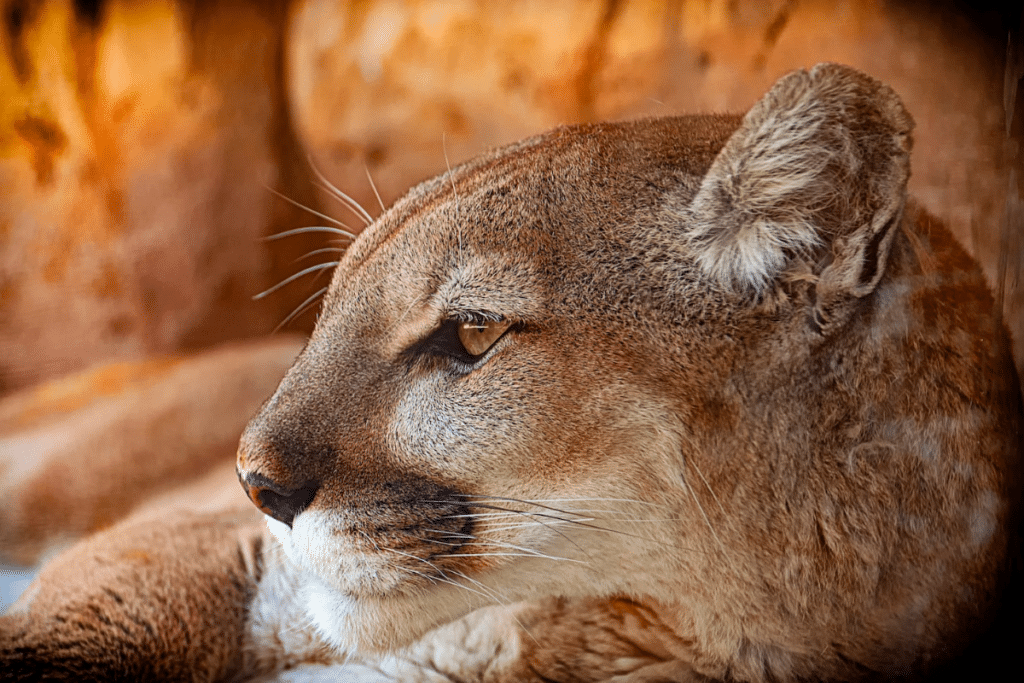You may be on a hike, exploring everything from Alaska’s famous wild berries to the beautiful mountains rising in the distance. You have come prepared with your sunscreen, bear spray, and hiking boots, but then something flashes by you on all fours.
Was that a mountain lion? What it a lynx or bear? What do you do in that situation?
The chances of seeing mountain lions in Alaska is very unlikely.
Mountain Lions are not native to Alaska. If you saw something that looked like a mountain lion, it may have been a lynx.
Mountains lion sightings have been reported in Alaska, but the Alaska Department of Fish and Game has said that they are so rare that they have taken on almost a mythical quality – almost like Bigfoot. Also known as “the ghost of the forest,” mountain lions have been spotted as far north as Fort Yukon!
Mountain lions are not native to Alaska. There have been reports of mountain lion sightings near Delta Junction and in the Southeast Alaska region. These sightings are likely of animals that have migrated north to Alaska from the contiguous United States or Canada.
With Canada bordering Alaska and Canada being home to Mountain Lions, it’s not unlikely that a few have crossed the border to explore portions of the state.
The Alaska Department of Fish and Game does not have a management program for mountain lions, and it is illegal to hunt them in the state. It is essential to be aware that if you do see a mountain lion in Alaska, it is best to give it space and make sure to report the sighting to authorities.
What Are Mountain Lions?
Mountain lions, pumas, cougars – these are all the same animal.
Mountain lions are large felines that are native to North and South America. They are found throughout the Americas, from Canada all the way to the southern tip of Chile.
Mountain lions are apex predators and are known for their strength and agility. They have a distinctive tan or light brown coat and a long, thick tail. Adult males can weigh up to 150 pounds and can be over 8 feet long from nose to tail. Females are smaller, weighing up to 90 pounds.
They are solitary animals and are most active at dawn and dusk. They are skilled hunters and can take down prey that is much larger than themselves, such as deer, elk, and even bison. They are also known to prey on smaller animals, such as raccoons and squirrels.
Despite their reputation, mountain lions are not typically a threat to humans. Attacks on humans are very rare, and most mountain lions will avoid contact with people if given the opportunity. However, if a mountain lion is sick or injured, it may become more aggressive and pose a threat to humans.
Mountain lions are also crucial for maintaining a balance in the ecosystem. They help control the population of herbivores such as deer, and their presence can help preserve the biodiversity of an area.
Human activities such as habitat destruction, hunting, and trapping have led to a decline in mountain lion populations in many areas. Conservation efforts are currently underway to protect and preserve these magnificent animals.
What Is The Difference Between A Mountain Lion and A Lynx?
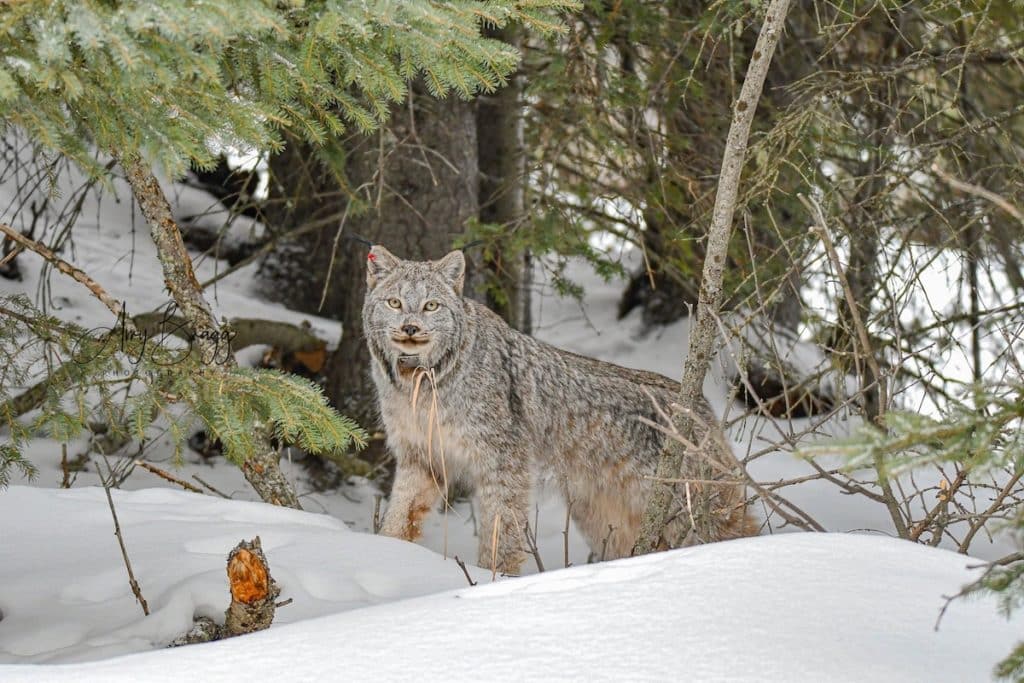
Mountain lions and lynx are both members of the Felidae family, which includes all species of cats, but they are different species with distinct physical and behavioral characteristics.
Mountain lions are large cats that can weigh up to 200 pounds and measure up to 8 feet in length. They have a tawny-colored coat with a white underbelly and black-tipped tail. Their hind legs are longer than their front legs, giving them a distinctive crouched appearance when running.
Mountain lions are found throughout North and South America and are known for their powerful hunting abilities and solitary nature.
Lynx, on the other hand, are much smaller cats, weighing up to 40 pounds and measuring up to 3 feet in length. They have a short, thick coat that ranges in color from reddish-brown to grayish-brown, with black tufts on their ears and distinctive ruffed necks. Their hind legs are shorter than their front legs, giving them a more vertical stance.
Lynx are found throughout the boreal forests of the Northern Hemisphere, and the Canadian Lynx is the only large cat species native to Alaska. They are also known for their keen senses of smell and hearing, which they use to hunt small mammals like hares and rodents.
They are generally shy and elusive animals that prefer to avoid human contact. They are not known to be aggressive toward humans, and attacks on humans are extremely rare. However, if a lynx feels threatened or cornered, it may defend itself by attacking.
In summary, mountain lions are larger, solitary cats found throughout North and South America, known for their powerful hunting abilities, while lynx are smaller cats found in the boreal forests of the Northern Hemisphere, known for their keen senses.
What Are Mountain Lions Known For?
Mountain lions are well known for several characteristics:
- Solitary nature: Mountain lions are solitary animals and typically only come together to breed. They have large territories that they defend from other mountain lions, and they do not have a social hierarchy like some other big cat species.
- Powerful hunting abilities: Mountain lions are predators and are known for their strength and agility. They are able to take down prey as large as deer, elk, and even bison. They are also opportunistic hunters and will also prey on smaller animals such as raccoons, skunks, and even domestic animals.
- Stealthy and elusive: Mountain lions are known for their stealth and elusiveness. They are able to move silently through the wilderness and are often not seen by humans, even in areas where they are known to live.
- Versatile habitat: Mountain lions are found throughout North and South America and are able to adapt to a wide variety of habitats, including forests, deserts, and grasslands. They are also good swimmers and climbers.
- Long life span: Mountain lions have a long life span in the wild, which can be up to 20 years. They have a low reproduction rate, so their population is hard to maintain. There are extensive conservation efforts in the lower 48 to bring their population back into balance.
- Sounds: They are known to make a variety of sounds, including growls, snarls, and purrs. They also make a high-pitched, piercing scream that has been described as sounding like a woman’s scream. This sound is usually heard during mating season when males and females are trying to locate each other. It is a territorial call, and it is also used as a warning to other mountain lions to stay away. The scream can be heard for miles, and it is used to communicate with other mountain lions in the area.
What To Do If You Encounter A Mountain Lion In Alaska
Encountering a mountain lion in the wild can be a nerve-wracking experience, but it is important to know how to react in order to stay safe.
Here are a few tips on what to do if you encounter a mountain lion:
- Do not approach the animal: If you see a mountain lion, do not approach it or try to get too close to it. Give the mountain lion plenty of space and respect its territory.
- Make yourself appear larger: If a mountain lion approaches you, make yourself appear as large and intimidating as possible. Stand very tall, raise your arms, and open your jacket or coat if you have one. Make noise by shouting, clapping, or banging objects together, similar to your reaction to a nearby bear.
- Do not run: If a mountain lion is close, do not run away. Running can trigger the animal’s natural instinct to chase prey. Instead, back away slowly and calmly while facing the animal.
- Fight back if attacked: If a mountain lion attacks you, fight back with everything you have. Use your hands, feet, and any available tools or weapons to defend yourself.
- Report the sighting: If you encounter a mountain lion, it is important to report the sighting to the appropriate authorities. This will help them keep track of the animal’s movements and protect both you and others in the area.
In case of a confirmed sighting, the department will assess the situation and take appropriate action to ensure public safety and the welfare of the animal.
While mountain lions are not native to Alaska and confirmed sightings are rare, it is important for people to be aware of the possibility of their presence and take necessary precautions if they encounter one.
Any sightings should be reported to the appropriate authorities as soon as possible.
Spot some less dangerous wildlife in the great outdoors of Alaska. Here are 12 of the best hiking and backpacking trips in Denali to get you excited for your next hike.
After living over 14 years in Alaska, Megan McDonald can confidently state that there’s not much of the state on the road system that she hasn’t visited. From the Brooks Range to McCarthy, Homer, and everywhere in between, every nook and cranny of Alaska is always her new favorite place.
As President and co-founder of Alaska-based boutique media agency HuMu Media, she spends her work time writing, photographing, and traveling, and her off time writing, photographing, and traveling. They say do what you love, and she is lucky enough to do so!
You can follow her travels on Instagram at @theitinerantginger

